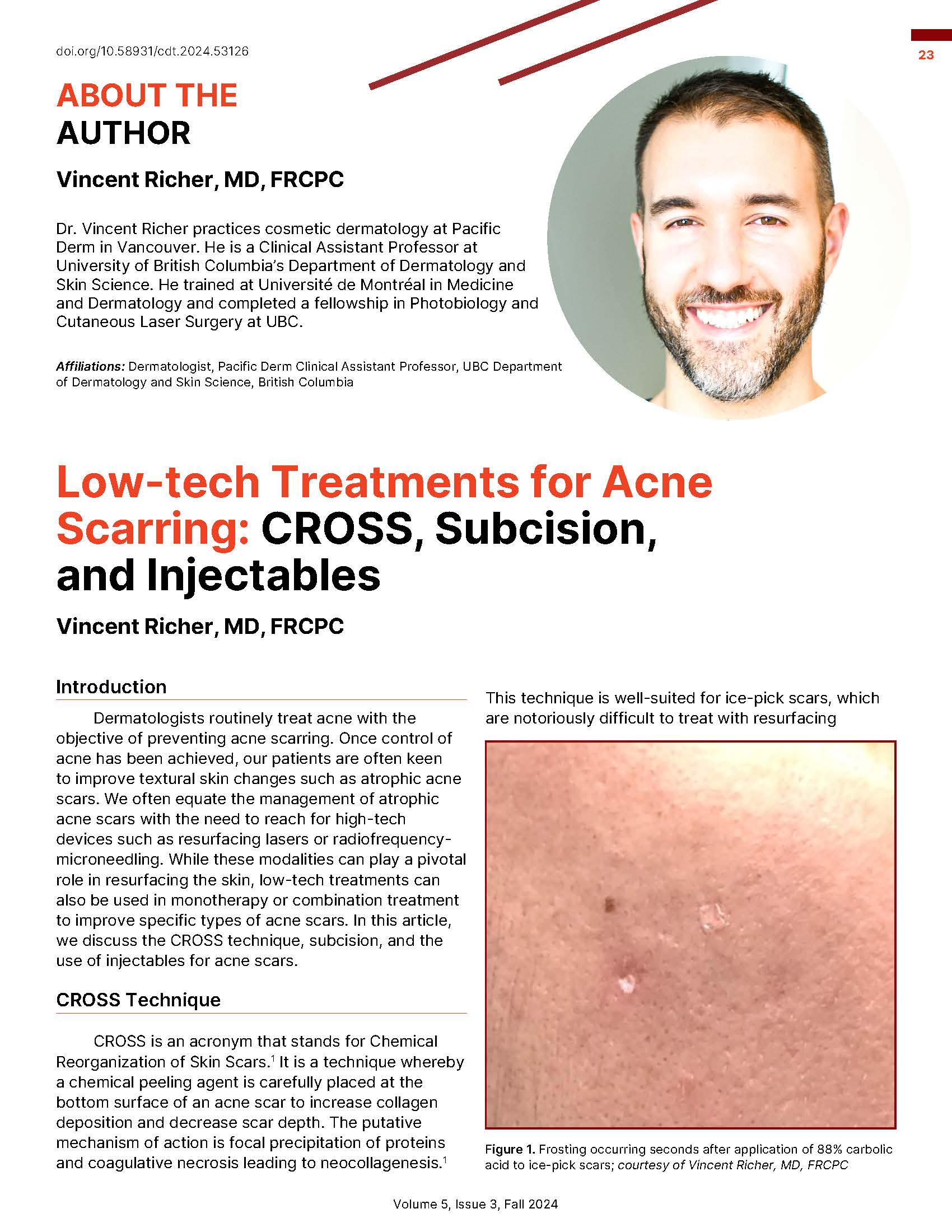Low-tech Treatments for Acne Scarring: CROSS, Subcision, and Injectables
DOI:
https://doi.org/10.58931/cdt.2024.53126Abstract
Dermatologists routinely treat acne with the objective of preventing acne scarring. Once control of acne has been achieved, our patients are often keen to improve textural skin changes such as atrophic acne scars. We often equate the management of atrophic acne scars with the need to reach for high-tech devices such as resurfacing lasers or radiofrequency-microneedling. While these modalities can play a pivotal role in resurfacing the skin, low-tech treatments can also be used in monotherapy or combination treatment to improve specific types of acne scars. In this article, we discuss the CROSS technique, subcision, and the use of injectables for acne scars.
References
Wambier CG, Lee KC, Soon SL, et al; International Peeling Society. Advanced chemical peels: Phenol-croton oil peel. J Am Acad Dermatol. 2019 Aug;81(2):327-36.
Horovitz T, Salameh F, Shehadeh W, et al. Painting CROSS TCA technique: modification of the CROSS method for the treatment of atrophic acne scars-Case series. J Cosmet Dermatol. 2022 Jan;21(1):327-30.
Chung HJ, Al Janahi S, Cho SB, et al. Chemical reconstruction of skin scars (CROSS) method for atrophic scars: A comprehensive review. J Cosmet Dermatol. 2021 Jan;20(1):18-27.
Dalpizzol M, Weber MB, Mattiazzi AP, et al. Comparative study of the use of trichloroacetic acid and phenolic acid in the treatment of atrophic-type acne scars. Dermatol Surg. 2016 Mar;42(3):377-83.
Vempati A, Zhou C, Tam C, et al. Subcision for atrophic acne scarring: a comprehensive review of surgical instruments and combinatorial treatments. Clin Cosmet Investig Dermatol. 2023 Jan 18;16:125-34.
Siperstein R, Nestor E, Meran S, et al. A split-face, blind, randomized placebo-controlled clinical trial investigating the efficacy and safety of hyaluronic acid filler for the correction of atrophic facial scars. J Cosmet Dermatol. 2022 Sep;21(9):3768-78.
Tam C, Khong J, Tam K, et al S. A comprehensive review of non-energy-based treatments for atrophic acne scarring. Clin Cosmet Investig Dermatol. 2022 Mar 14;15:455-69.


